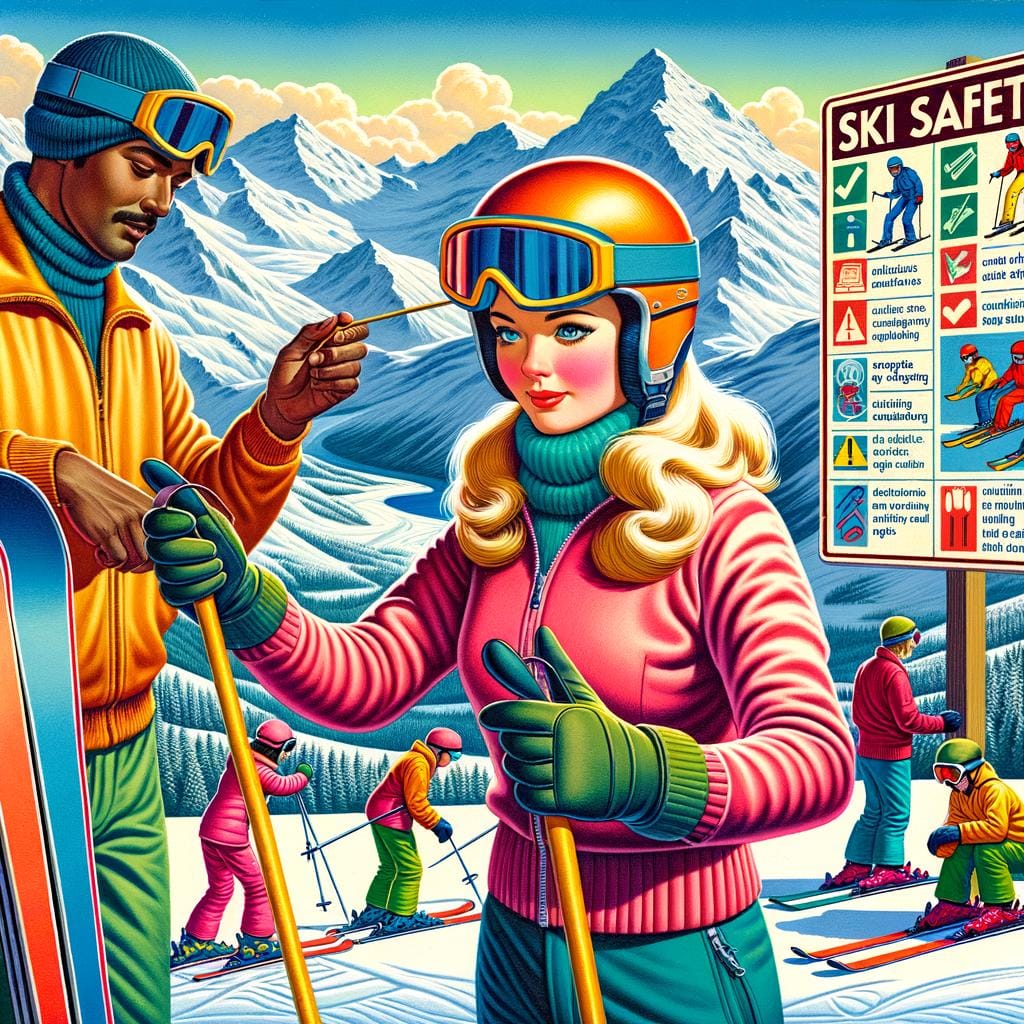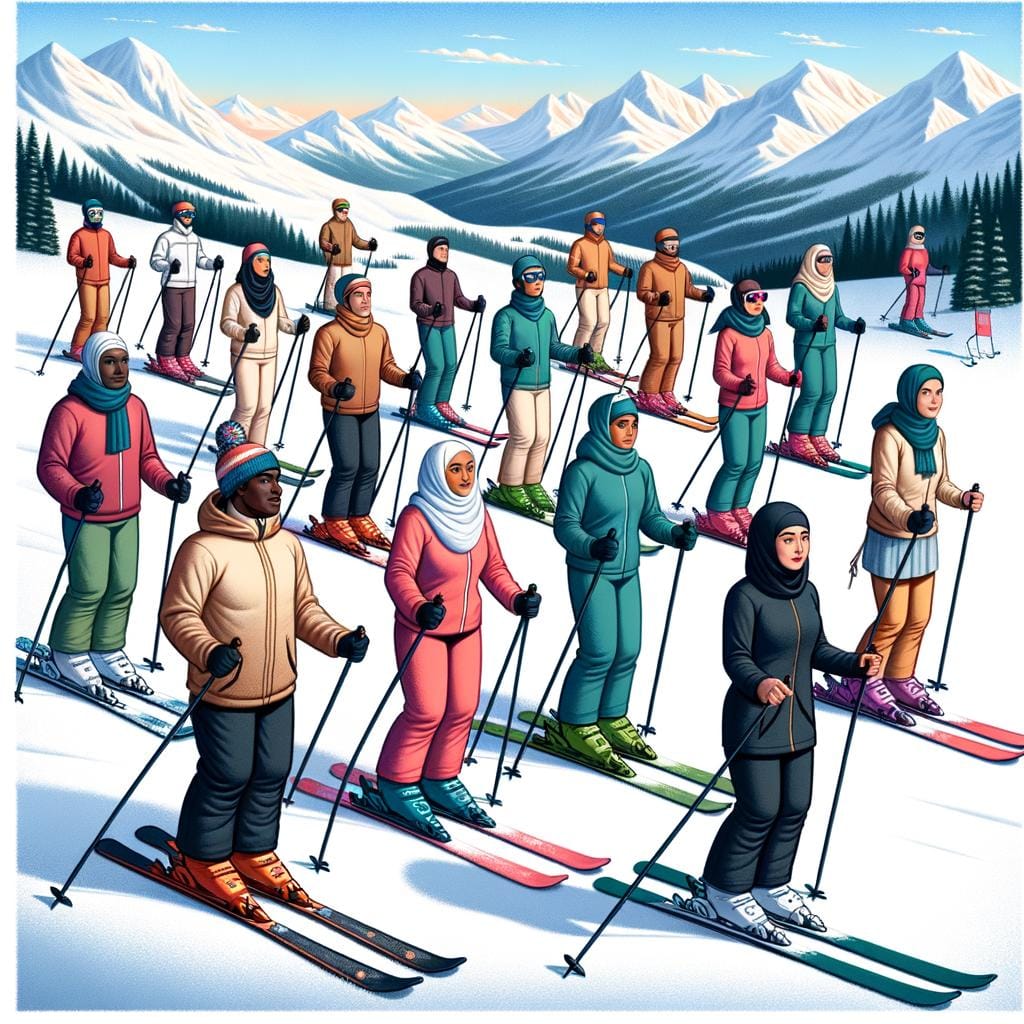Skiing is a thrilling and exhilarating winter sport enjoyed by many enthusiasts around the world. However, with the excitement of speeding down snow-covered slopes comes the need for utmost caution and attention to ski safety. As more people take to the mountains each year, it is essential to prioritize safety measures to prevent accidents and injuries on the slopes.
Understanding the risks associated with skiing is crucial in promoting safer practices on the mountains. Common skiing injuries can range from minor cuts and bruises to more serious fractures and head injuries. By taking a closer look at statistics related to these incidents, skiers can better grasp the importance of adhering to safety protocols and wearing appropriate gear while on the slopes.
In this article, we will delve into various aspects of ski safety, including essential gear such as helmets, goggles, and protective clothing. We will also explore how physical conditioning and skills training play a vital role in preparing for a safe ski trip. Additionally, we will discuss the impact of weather conditions on ski safety, focusing on avalanche awareness and risk management strategies that every skier should be familiar with before hitting the slopes.
Understanding the Risks
Skiing is a thrilling winter sport that attracts many enthusiasts each year. However, it is important for skiers to be aware of the potential risks and dangers involved in order to prioritize ski safety on the slopes. Understanding the common skiing injuries and statistics can help skiers make informed decisions and take necessary precautions before hitting the slopes.
Common Skiing Injuries
One of the most common skiing injuries is knee ligament sprains, particularly tears in the anterior cruciate ligament (ACL). Other frequent injuries include fractures, dislocations, and strains in various body parts such as the wrist, shoulder, and head. It is essential for skiers to understand the mechanism of these injuries in order to prevent them through proper equipment usage, technique, and risk management.
Statistics
According to recent studies, knee injuries account for approximately 30-40% of all skiing-related injuries. Head injuries are also a significant concern, especially among skiers who do not wear helmets. Additionally, statistics show that beginner and intermediate skiers are more prone to accidents compared to advanced skiers. By being aware of these statistics, skiers can assess their own skill level and take appropriate measures to ensure their safety on the slopes.
Prevention and Risk Management
To reduce the risk of common skiing injuries, it is important for skiers to maintain good physical conditioning through exercises that target strength, flexibility, and endurance. Proper ski equipment such as helmets, goggles, wrist guards, and protective clothing can also mitigate the impact of falls or collisions.
Skiers should also be mindful of their surroundings on the slopes, follow trail signs and markings diligently, and avoid risky behaviors such as excessive speed or ignoring weather warnings. Overall, by understanding the risks associated with skiing and taking proactive measures for prevention, skiers can enjoy a safe and enjoyable experience on the snow-covered mountains.
Essential Gear for Ski Safety
Skiing is an exhilarating sport that offers breathtaking views and adrenaline-pumping experiences. However, it is important to prioritize ski safety to ensure a fun and injury-free day on the slopes. One of the key aspects of ski safety is having the right gear to protect yourself from potential risks and accidents.
When hitting the slopes, it is crucial to have essential gear that can significantly reduce the risk of injuries. Here are some must-have items for ski safety:
- Helmets: Wearing a helmet while skiing can prevent head injuries in case of falls or collisions. Make sure to choose a helmet that fits properly and is designed for snow sports.
- Goggles: Proper eye protection is essential for clear vision on bright sunny days or during snowy conditions. Goggles help shield your eyes from harmful UV rays and prevent snow blindness.
- Protective Clothing: Dressing in layers with waterproof and insulated clothing will help keep you warm, dry, and comfortable throughout your ski day. Stay away from cotton material as it absorbs moisture and can lead to hypothermia.
By using the right gear for ski safety, you can enjoy your skiing experience with peace of mind knowing that you are prepared for any unforeseen circumstances. Remember, safety first.
Preparing for a Safe Ski Trip
When heading out for a ski trip, it is essential to ensure that you are physically prepared for the challenges that come with this adventurous activity. Skiing requires strength, balance, and endurance to navigate the slopes safely and effectively. Engaging in pre-trip physical conditioning can help reduce the risk of injuries and improve your overall performance on the snow-covered mountains.
Physical Conditioning
Incorporating exercises that focus on cardiovascular fitness, leg strength, core stability, and balance can significantly enhance your skiing experience. Activities such as cycling, running, squats, lunges, planks, and yoga can help strengthen key muscle groups needed for skiing. It is essential to start your conditioning routine well in advance of your ski trip to allow time for progress and avoid muscle soreness during your time on the slopes.
Skills Training
In addition to physical conditioning, honing your skiing skills through training sessions or lessons can make a substantial difference in your safety and enjoyment while skiing. Whether you are a beginner or an experienced skier looking to improve your technique, investing time in skills training with a certified instructor can provide valuable insights and practice opportunities.
Learning how to control your speed, make proper turns, and navigate different terrains can increase your confidence and reduce the likelihood of accidents on the slopes.
Equipment Check
Lastly: Ensure all equipment is properly fitted. This includes not only skis and boots but also helmets and other protective gear. Safety equipment like helmets are paramount as they greatly reduce the risk of head injuries during falls or collisions. Additionally ensuring bindings are correctly adjusted can prevent knee injuries.
By prioritizing physical conditioning, skills training, and equipment preparation before embarking on a ski trip, you can set yourself up for a safe and enjoyable experience on the slopes while reducing the likelihood of accidents or injuries related to skiing activities.
The Role of Weather Conditions in Ski Safety
Weather conditions play a crucial role in ski safety, especially when it comes to avalanche awareness and risk management. Avalanches are a significant hazard for skiers, snowboarders, and other winter sports enthusiasts. Understanding how weather factors such as temperature, snowfall, wind speed, and terrain can contribute to avalanche risks is essential for staying safe on the slopes.
Avalanche safety begins with proper education and training. Skiers should familiarize themselves with avalanche forecasts and reports provided by local authorities or professional organizations. These resources offer information on current snow stability, potential avalanche zones, and recommended precautions. Taking an avalanche safety course can also help individuals learn about rescue techniques, equipment use (such as beacons, shovels, and probes), and decision-making skills in avalanche-prone areas.
Furthermore, risk management strategies are essential for mitigating avalanche dangers while skiing. This includes factors such as avoiding high-risk terrain during periods of increased avalanche activity or unstable snowpacks, traveling in groups rather than alone, maintaining distance between each skier to reduce the weight load on slopes, and establishing predetermined escape routes in case of an emergency.
By respecting the power of nature and utilizing sound judgment based on weather conditions and avalanche warnings, skiers can significantly reduce the likelihood of encountering dangerous situations while enjoying their winter adventures.
Tips for Safe Skiing Techniques
Skiing is a thrilling and exhilarating sport, but it comes with inherent risks that must be managed to ensure a safe and enjoyable experience on the slopes. One of the key aspects of ski safety is practicing proper skiing techniques, which include mastering slope etiquette, speed control, and turning. By following these tips, skiers can minimize the risk of accidents and injuries while maximizing their fun on the mountain.
One essential aspect of safe skiing techniques is slope etiquette. Skiers should always be aware of their surroundings and yield to others when necessary. This means avoiding sudden stops in the middle of a run, looking uphill before merging onto a trail, and giving right of way to skiers in front. By being courteous and mindful of other skiers on the slopes, everyone can enjoy a safer and more pleasant skiing experience.
In addition to practicing slope etiquette, skiers must also focus on speed control while navigating downhill. Maintaining a controlled speed is crucial for avoiding collisions with other skiers or obstacles on the mountain.
Skiers should start at a comfortable pace that matches their skill level, avoid excessive speed particularly in crowded areas, and use proper turning techniques to regulate their speed effectively. By skiing at an appropriate speed for the conditions, skiers can reduce the likelihood of accidents and promote overall ski safety on the mountain.
| Ski Safety Tips | Description |
|---|---|
| Slope Etiquette | Be aware of surroundings, yield when necessary, avoid sudden stops in the middle of a run. |
| Speed Control | Maintain controlled speed to avoid collisions with others or obstacles. |
| Turning Techniques | Use proper turning techniques to regulate speed effectively. |
Emergency Preparedness on the Slopes
Being prepared for emergencies while skiing is crucial to ensuring ski safety. Having the right gear and knowledge can make a significant difference in case of an accident or injury on the slopes. Here are some key items and tips for emergency preparedness when hitting the slopes:
- First Aid Kits: A well-stocked first aid kit is essential for any ski trip. It should include items such as bandages, antiseptic wipes, pain relievers, and blister pads. Knowing how to use the items in the kit is just as important as having them with you.
- Phone Apps: There are several phone apps available that can provide valuable information and assistance in case of emergencies while skiing. Some apps offer real-time tracking to help rescuers locate you more quickly in case you get lost or injured.
- Contact Information: Make sure to have important contact information readily available, including the phone numbers of local ski patrol, resort management, emergency services, and your emergency contacts. Ensure your phone is fully charged before hitting the slopes.
Being proactive about emergency preparedness can help prevent accidents from turning into disasters while skiing. It’s also essential to be aware of your surroundings, follow all posted guidelines and signs, and never ski alone in remote areas without informing someone of your plans.
Remember, ski safety is a shared responsibility among skiers, resorts, and rescue teams. By taking precautions and being prepared for any situation that may arise on the slopes, you can ensure a safer and more enjoyable skiing experience for yourself and others around you.
Ski Safety for Children and Beginners
Skiing is an exhilarating sport that can be enjoyed by people of all ages, including children and beginners. However, it is essential to prioritize ski safety in order to prevent accidents and injuries on the slopes. When it comes to children and beginners, taking extra precautions and following specific guidelines can make a significant difference in ensuring a safe and enjoyable skiing experience.
One of the most critical aspects of ski safety for children and beginners is proper lessons and instruction. It is highly recommended for individuals new to skiing, especially young children, to take formal lessons from certified instructors. These lessons not only teach the fundamental skills needed for skiing but also emphasize important safety practices such as how to stop safely, navigate different terrains, and use ski lifts correctly.
In addition to lessons, supervision plays a crucial role in ski safety for children and beginners. An experienced adult or instructor should always accompany young skiers on the slopes to provide guidance, support, and assistance when needed. For beginners of any age, having someone nearby who can offer help in case of emergencies or unexpected situations can help prevent accidents and ensure a positive skiing experience.
| Age Group | Importance of Lessons |
|---|---|
| Children | Teach fundamental skills and safety practices |
| Beginners (of any age) | Emphasize proper techniques and safe skiing practices |
The Future of Ski Safety
As ski safety continues to be a top priority for all skiers, the future of injury prevention in the skiing world looks promising with technological advances and innovations. With new developments in equipment, gear, and communication tools, skiers can further enhance their safety on the slopes.
One of the most exciting advancements in ski safety is the integration of wearable technology. Companies are now producing helmets with built-in sensors that can detect impacts and alert emergency services in case of an accident. Additionally, GPS tracking devices are becoming more popular among skiers to help locate them in case they get lost or caught in an avalanche.
Another area of innovation is in gear design and materials. Ski manufacturers are constantly researching and developing new materials that can improve impact absorption, reduce weight, and increase overall performance. From advanced helmet designs to protective clothing with built-in airbags, skiers have a wider range of options to choose from for their safety needs.
As technology continues to evolve, it is crucial for skiers to stay informed about the latest trends and developments in ski safety. By staying up-to-date with advancements in equipment and gear, skiers can ensure they are well-prepared for any situation on the slopes. With a combination of proper training, safe skiing techniques, and access to cutting-edge technologies, skiers can enjoy their time on the mountain while prioritizing their well-being and ski safety.
Frequently Asked Questions
How to Safely Ski?
Skiing safely involves following the rules of the slopes, wearing appropriate gear like helmets and goggles, staying within your skill level, and being aware of your surroundings. It is important to take lessons if you are a beginner and always ski in control.
Is Ski a High Risk Sport?
Skiing can be considered a high-risk sport due to the potential for injuries from falls or collisions. The speed, terrain, weather conditions, and other factors can increase the risk involved in skiing. However, with proper preparation, training, and caution, many skiers enjoy the sport safely.
Is It Safe to Ski by Yourself?
While skiing alone can provide a sense of freedom and solitude, it is generally safer to ski with a partner or in a group. Skiing solo increases the risk of accidents or getting lost on the mountain without anyone there to help in case of an emergency.
Skiers should always inform someone else of their plans before hitting the slopes alone.

An avid outdoor enthusiast, writer, and environmental advocate who has spent over two decades exploring the world’s most breathtaking landscapes. With a background in environmental science and a passion for adventure, Frances combines her love for nature with her talent for storytelling to inspire others to embark on their own outdoor journeys.





